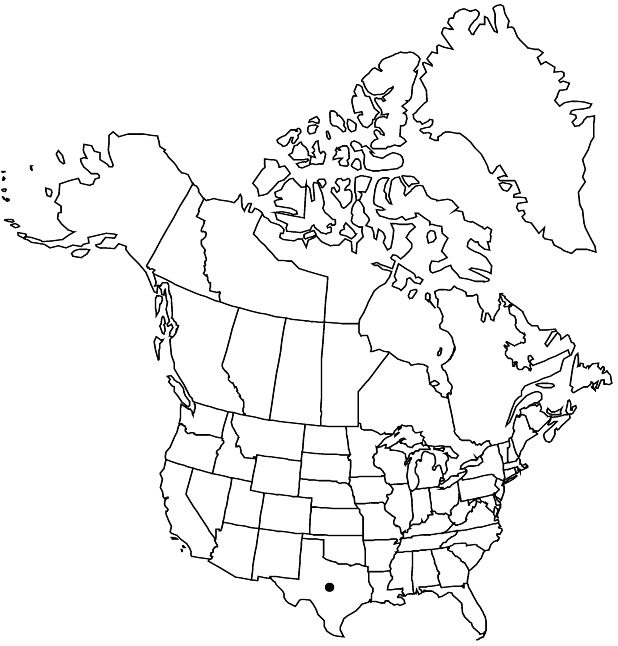Lenophyllum texanum
Smithsonian Misc. Collect. 47: 162. 1904,.
Plants tufted, with shoots from axils of basalmost leaves, dying to base. Stems 1–4(–7) dm × 1–3 mm, with 5–8 leaf pairs near base and to 15 pairs in all. Leaves easily detached and rooting; blade 4–10 mm wide, 3–5 mm thick, apex acuminate with tip 1 mm. Inflorescences of compact, 1(–3)-flowered cincinni, 5–20-branched, 2–15 cm × 12–20 mm; branches mostly 1-flowered. Flowers: sepals 2.5–4 × 1–2.5 mm; petals 5–6 × 2 mm; corolla 3.5 × 5–7 mm (open). Follicles brown, 7–8 mm. Seeds ca. 0.6 mm. 2n = 88.
Phenology: Flowering fall–spring.
Habitat: Sand or sandy soil and on "clay dunes" near coast
Elevation: 0-50 m
Distribution

Tex., Mexico (Nuevo León, Tamaulipas).
Discussion
Lenophyllum texanum is abundant locally, forming mats, often under cacti and other shrubs on the coastal plain and in the lower Rio Grande valley. J. N. Rose (1923) wrote that it grew most prolifically under glass and was in danger of becoming a pernicious weed in greenhouses, the leaves easily dropping off and each at once starting a new colony.
Selected References
None.
